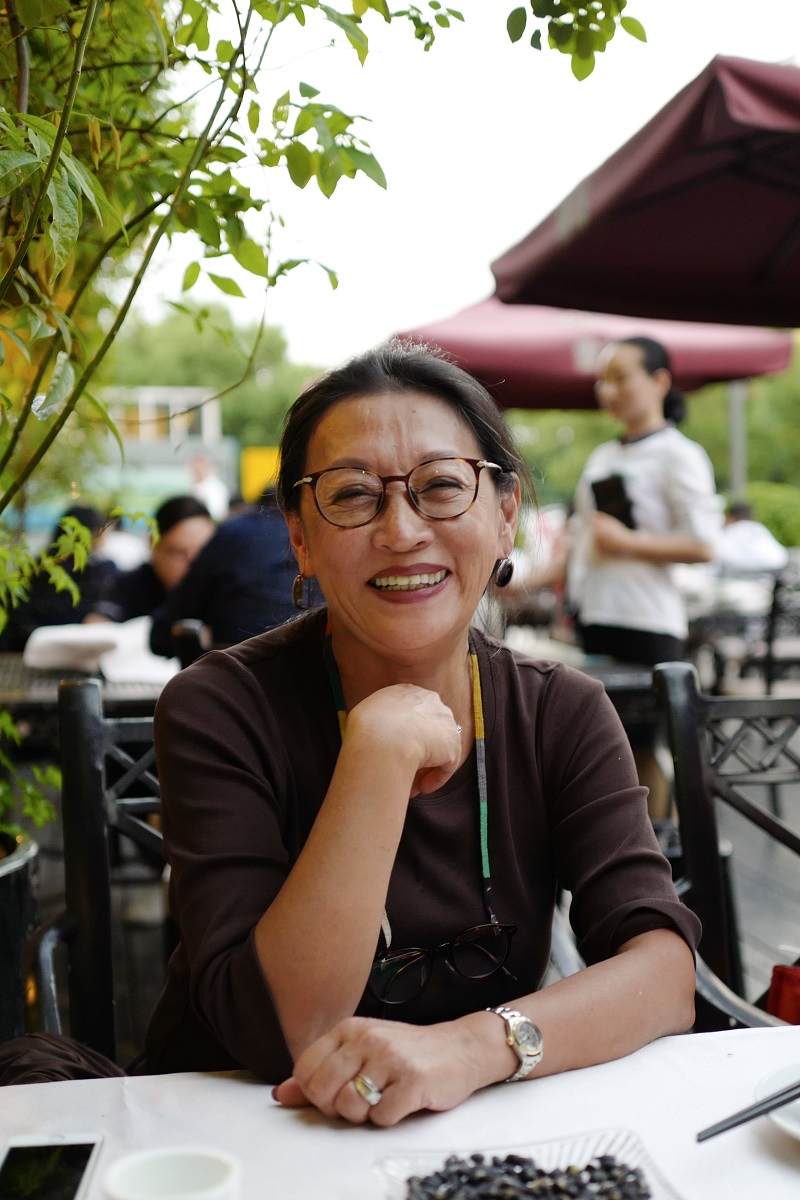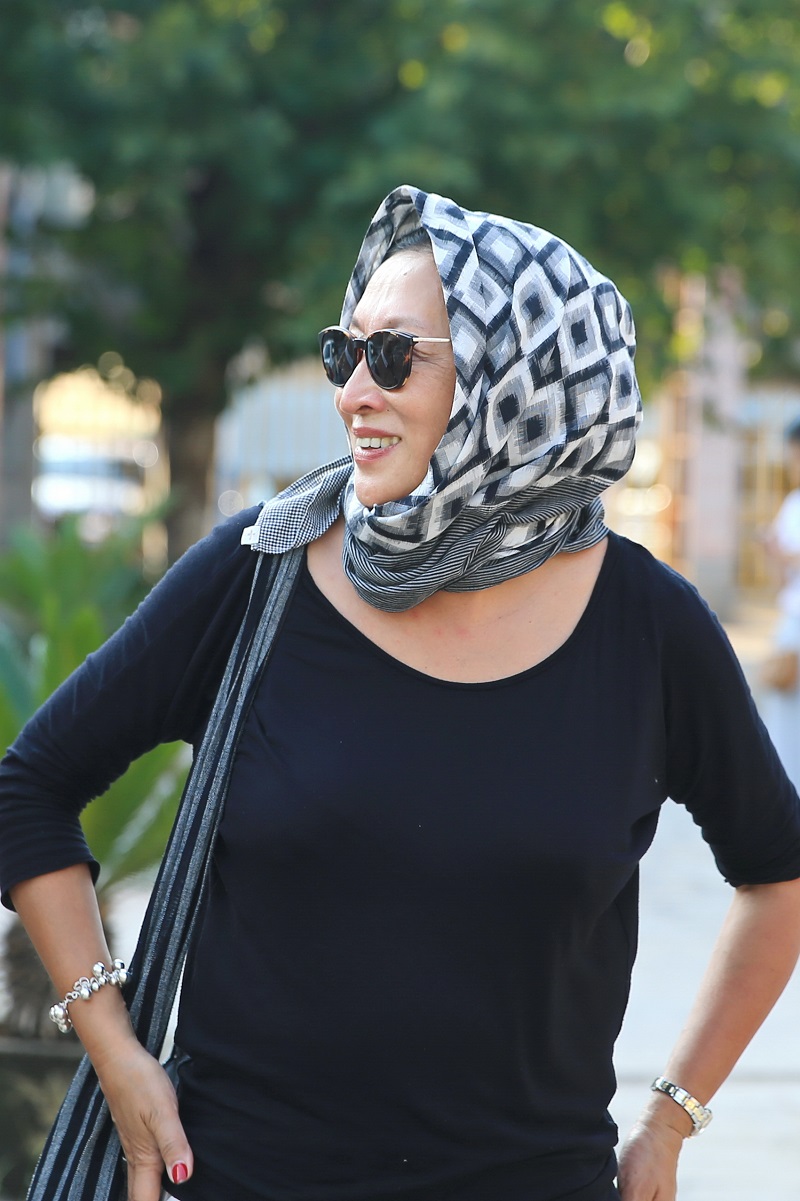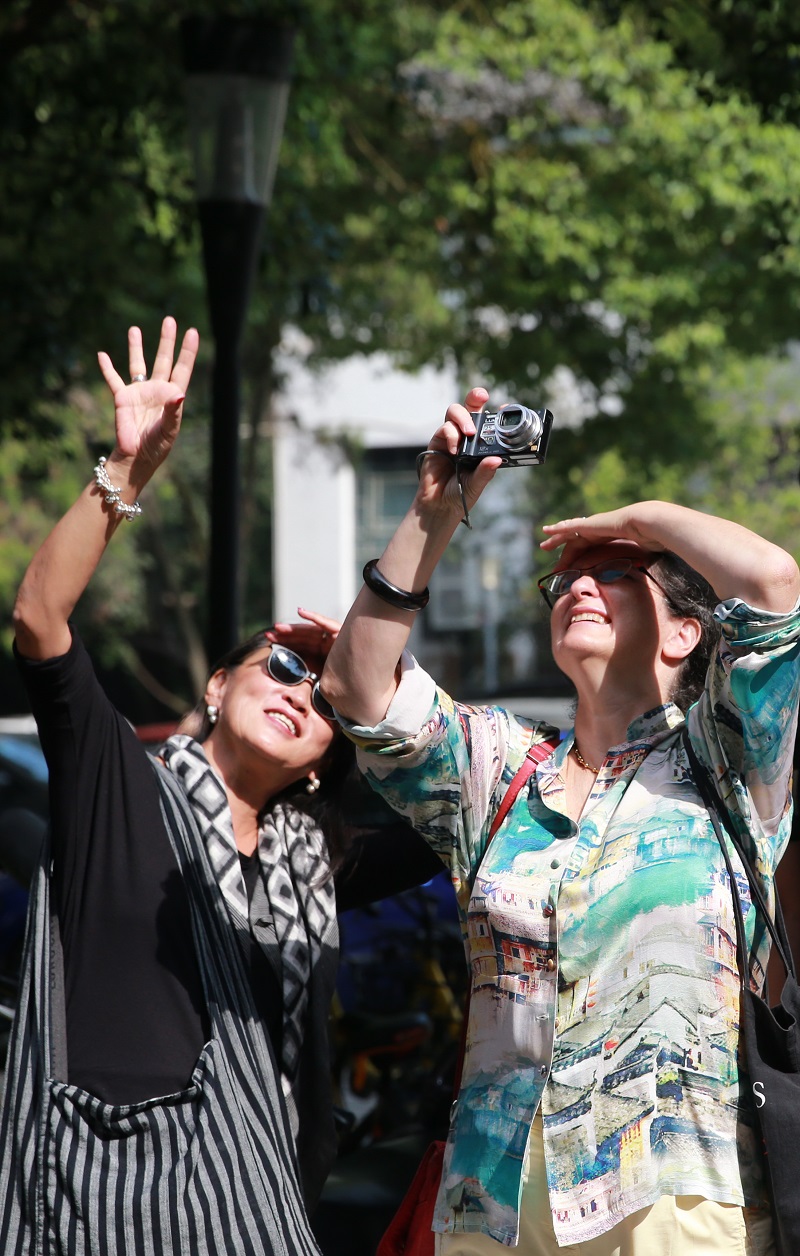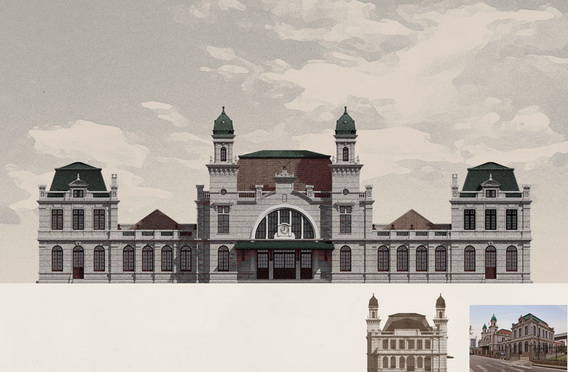Current position: > ENGLISH > What's on > News >
Minja Yang: Let’s String the Pearls of Heritage – an Interview in Wuhan
Release time:2017-09-28 16:05
By Song Yi
Prof. Minja Yang (by Song Yi)
Prof. Minja Yang, former Deputy Director of UNESCO World Heritage Center and the current President of Raymond Lemaire International Conservation Center, paid her second visit to Wuhan attending the 6th Crossover Forum themed Culture, Urban and Future. During an interview, Yang introduced her “String – Pearl Approach” on heritage conservation within cities like Wuhan. “Urban heritage conservation in the ideal scenario will be that the historical cities as a whole can be protected, and that the new development could be outside the historic core. But in many parts of Asia where land is scarce, for example Japan and Korea, modern development has already taken place on top of the historic city. Parts of it have already been demolished and destroyed with new buildings on it. So in that case, the monuments have survived, but the overall historic fabric of the city is already gone. So in a case like this, one can try to recount the heritage value of the city by taking a few monuments, or taking an ensemble, like a cluster of houses or non-monumental buildings, vernacular buildings or shop-houses complexes, and try to preserve those things as well. So if you are putting together a string of pearls, sometimes it’s a single pearl of monument, sometimes it’s an ensemble, but you try to string them together, in order to recount the story. So the string becomes the linkage, but then you have to work very hard on the question of interpretation, because if these beautiful monuments are surrounded by high-rise buildings, there’s no longer any context, so this is why one has to work on like a site interpretation center with photos, historic maps to recount what it was and what the context was before. And so in any case, heritage is not just to preserve the good, the object. It’s in order to recount the history of the past. “
Yang's second visit to Wuhan for the 6th Crossover Forum (by Liu Jianlin) Strolling along the river bank, Yang was fascinated by the landscape. But what impressed her most were the lively leisure scenes in this public space enjoyed by local people of all ages in diverse ways. She then exemplified her “String – Pearl Approach” with advice of having interpretation center consisting of small kiosks along the bank for the recounting of its past.“Even those river banks along the Yangtze and Han River are beautifully arranged as public spaces now, for jogging and for walking around and for sports activities, the relationship between the river bank public space and the historic role of those banks is no longer apparent. So by having small kiosks as an interpretation center by showing photos, we will help people understand what the place was like before. In China there is a tendency to make one big huge museum, but I think if you want the regular people understand rather than having one humongous museum, it will be nice to have several along the way. Every one kilometer you can have one kiosk, then next to it maybe a teahouse, and further another kilometer. It may be an ordinary place where people can come in and go out easily, without having the formality of major museums. This is the way of recounting through a string of pearls. It requires public education. UNESCO has a world heritage KIT which is more like a standard kit explaining what world heritage is, what it aims to do, the nature-cultural links, etc. But there every heritage site should prepare its own ten-to-fifteen pages how you recount your story and give that contribution to the world heritage education kit. ”
Sunshine in Wuhan (by Liu Jianlin) Yang also has ideas on Wuhan’s current effort to steer this city’s future towards sustainability making full use of its designing tradition in the past as well as its booming creative industries. The linkage between the past and the future along with the comprehensive involvement for creative activities are among her key concerns.“For example in the field of industrial design, like the bridges, you should interpret what is the relationship of that industrial design to today, do those same industries exist, in what way the technologies that you acquired from that are still relevant today. These are things you have to work on, to continue creating relevance of your past skills with the new creativity to meet the future needs. And creativity involves people at various levels. It involves not just engineers but also normal people and little craftsmen. Maybe you could make little replicas of those bridges for children or also as objects for decoration or even as jewelries. There are so many different ways. These skills are related to your industrial heritage, and can be applicable and useful for people at different levels. ”
Executive Editor: Xu Ying
|
That may be of interest to the article
- Ruopu CITY1000 Creative Projects
- Wuhan Design Biennale
- Wuhan Fashion Week 2018
- Great Rivers Forum
- Engineering Survey and Design Institute Dir
- Wuhan Night held in Beijing Design Week
- Message from Ms Irina Bokova on the Interna
- China's Dinosaur Egg Museum Blends the Anci
- Wuhan: Construct "Five Cultural Cities"
- 2016 Work Report of Wuhan Municipal Governm
- Regulations of Wuhan Municipality on Protec
- The WeChat Official Account of Wuhan Planni
- Wuhan Sets Up a Cultural Enterprise Credit
- Wuhan’s New 30 Articles Provides that At
- Wuhan Industrial Design Development Fund Pr
- Report on the Work of the Government and Po



